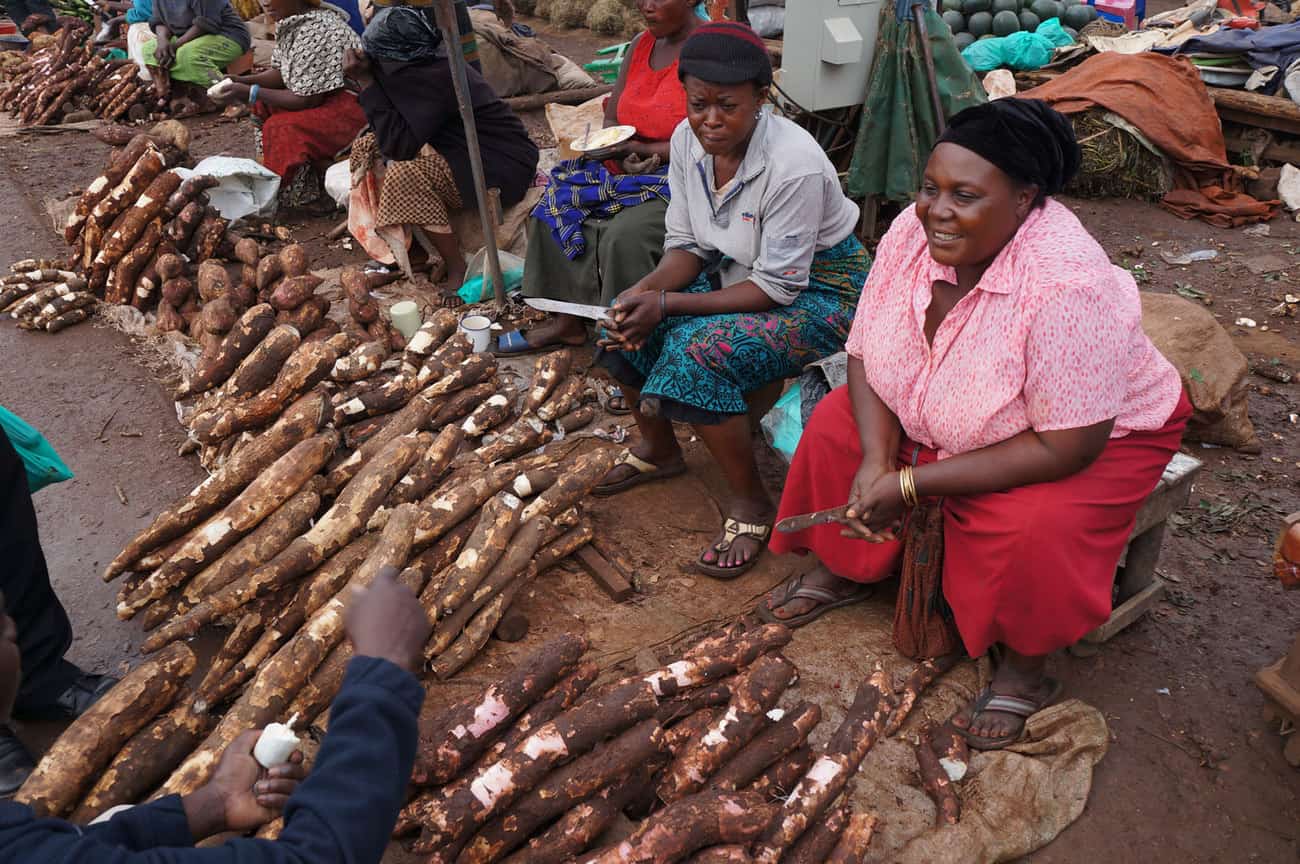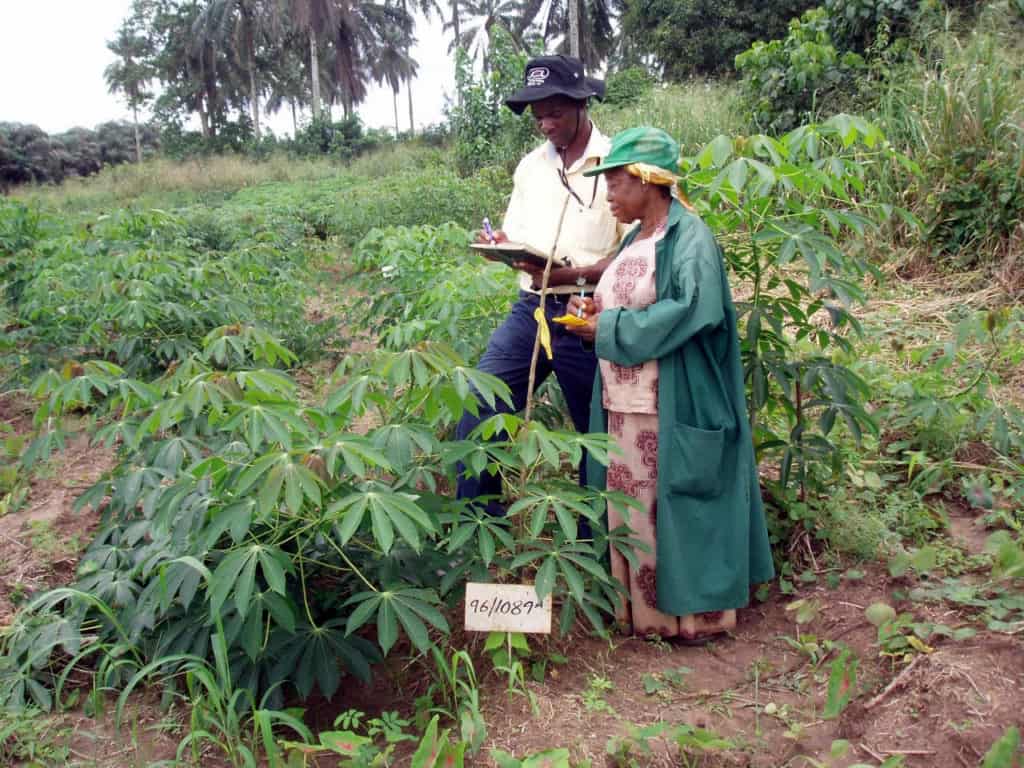Cassava and Climate Change: Boosting the IQ of a Naturally Climate-Smart Crop
- From
-
Published on
15.10.19
- Impact Area
-
Funders
DFID, Gates Foundation, United Kingdom

Cassava is hardy root crop consumed by millions of people across Africa—but largely ignored by commercial seed companies. That’s because it is basically a niche crop for the rest of the world.
In addition to producing multiple food dishes, cassava has enormous commercial potential in everything from tapioca pudding mixes and beer to biodegradable packaging and pharmaceutical-grade starches.
Cassava has been called a “Rambo root” or “survivor” crop for its capacity to survive conditions that would kill off crops like maize or wheat. Some varieties get even more productive as temperatures rise. But there are a number of diseases, like cassava mosaic disease and brown streak disease, that can kill or severely damage the crop. And climate change could accelerate their spread.
Still, cassava’s natural toughness could give it a prominent role in helping farmers adapt to climate change, as stressful conditions threaten the viability of more fragile crop types, including maize, Africa’s most important cereal crop. But like most super heroes, cassava has its vulnerabilities and enemies–and climate change is expected to intensify them all.
Now, the Next Generation or NextGen Cassava Breeding project, a CGIAR partnership between Cornell University and the Nigeria-based International Institute of Tropical Agriculture (IITA), is working to develop the best varieties of cassava the world has ever seen: disease-resistant cassava that is naturally high in Vitamin A, a nutrient vital to developing bodies that’s often missing from diets in low-income countries.

NextGen Cassava: Tapping New Technology to Breed at the Speed of Climate Change
Here are just a few ways scientists at NextGen Cassava are working to boost the intelligence of a clearly climate-smart crop:
- Using advanced techniques, like new tools for scanning a plants genome to screen thousands of cassava varieties and single out just those that have a genetic profile associated with advantages like disease resistance or high levels of Vitamin A. It makes it much easier for scientists to quickly narrow their focus to a relatively small group of breeding pairs likely to produce the best results. Normally, this winnowing process can take eight years or more. But the NextGen team required only two years to select an elite squad of breeding pairs from 2500 distinct varieties cassava. And from that squad, breeders have produced eight new varieties of disease-resistant, vitamin A rich cassava ready for testing on farms in the region.
- Other technologies NextGen scientists employed to speed up their work include radar and infrared tools that can reveal the state of cassava roots, where all the food is stored, as they grow. These tools allow scientists to monitor test crops while they are still in the ground to determine which of their new varieties has the root structure that will be a good match for producing cassava flour or for use in industrial processing.
- NextGen breeders have worked with partners to use a special hydroponic method for rapidly multiplying cassava seedlings. One thing about cassava: farmers don’t plant cassava seeds, they plant a piece of cassava stalk. But it can be very time consuming and costly to produce enough seedlings of a new variety to meet farmer demands. That’s why it’s not uncommon for farmers to end up procuring seedlings from multiple sources. But that often leaves a smorgasbord of cassava varieties growing in their fields. And such a situation could dilute IITA’s hard work to ensure that farmers are consistently producing disease-resistant, vitamin-rich cassava.
- IITA-supported GoSeed initiative is functioning like a quasi-commercial company. It is linking the NextGen project to local companies that will multiply seedlings and supply them to local agro-dealers. GoSeed also handles discussions with government regulators for getting product approvals.
African farmers and consumers will be the ultimate beneficiaries of this work. Also, NextGen Cassava is offering a model for others to emulate. It shows how scientists can tap an array of advanced technologies to generate improved crop varieties that can provide an abundance of nutritious food in a climate-stressed world.
Note: At the September 2019 United Nations Climate Action Summit in New York, a coalition of donors promised to invest more than $650 million in the CGIAR System Organization to help 300 million smallholder farmers in developing countries adapt to the impacts of climate change. A key part of CGIAR’s work on adaptation involves developing a new generation of crop varieties that can withstand climate stress like heat, drought and floods This blog post is about one critically important food crop. Look for new posts soon telling the stories behind our efforts to support a new era of sustainable, resilient food production on smallholder farms in the developing world.
Featured photo: Women selling cassava at market in Uganda. Credit: Hale Tufan
Related news
-

Mapping for Resilience: How Spatial Data is Transforming Karamoja Cluster
Ibukun Taiwo02.07.25-
Climate adaptation & mitigation
Pastoral communities in the Karamoja Cluster (a region spanning Kenya, Uganda, South Sudan, and Ethi…
Read more -
-

Building Resilience and Regeneration: The Central Highlands Ecoregion Foodscape (CHEF)
Sehlule Muzata02.07.25-
Climate adaptation & mitigation
At the CGIAR Sustainable Farming Program (SFP), we believe that collaboration is essential for trans…
Read more -
-

Planting with Precision: How Weather and Climate Information is Changing Bean Farming in Rwanda
The Alliance of Bioversity International and the International Center for Tropical Agriculture (CIAT)01.07.25-
Climate adaptation & mitigation
Imagine weather information as a GPS for farmers. Without it, the journey becomes uncertain, filled…
Read more -
